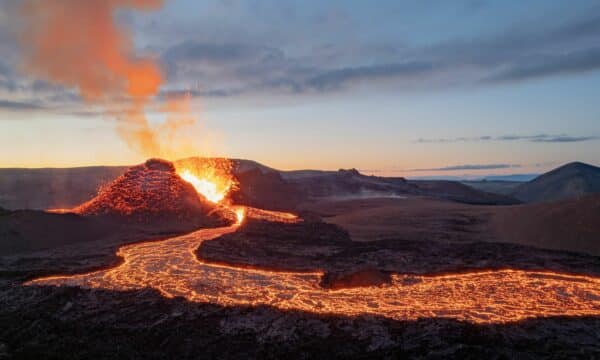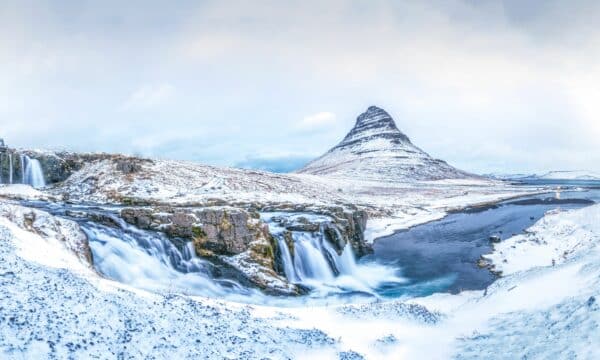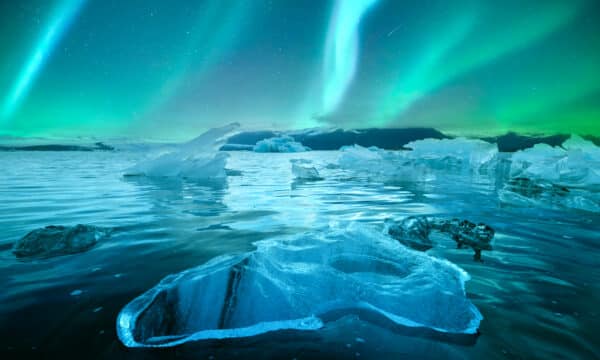When travellers journey through the dramatic landscapes of Iceland’s Eastfjords few take the time to explore the fascinating origins and history of each of the quirky villages they pass through.
Who can blame them? After all, with the Eastfjord’s rugged and untamed landscapes filled with an unmatched set of deep fjords, mountain ranges and endless waterfalls it’s often much easier to simply get lost in the nature itself.
However, having spent the summer of 2020 reacquainting myself with a great many lesser-spoken regions, towns and villages sitting in our own backyard, I stumbled upon one of Iceland’s most unusual villages in Fáskrúðsfjörður.
Few will be aware of the strong ties this village has with the French. A relationship dating back centuries due to the cod fishing trade with a charming reciprocative bond, influence and a great many tremendous tales.
In this article, I will explain the history and the uniqueness of East Iceland’s village of Fáskrúðsfjörður, and why you will need to make a stop there on your next visit to our shores.
A brief history of Fáskrúðsfjörður
The term “Big Fishing” began in the 16th century. This was in part due to the Catholic rite that it was forbidden to consume meat up to 166 days a year. As a result, there were a lot of fish to take the focus of the earlier Icelanders, but inshore fishing wasn’t enough.
Then after 1614, a whaling boat in the area delivered an incredible haul of cod, clearly demonstrating the potential of the surrounding waters.
With this new information that the Icelandic waters were thriving in fisheries, and it’s much closer proximity to France than the recently discovered Newfoundland, the Dunkirk sailers set sail for Iceland.
For nearly 400 years, from the 16th century until World War 1, French ships fished extensively off the coast of Iceland.
The French fisherman mostly came from the towns on the northern coast of France in Normandy and Brittany.
In particular, the French ships sailed from the northern towns of Dunkerque and Paimpol, while a smaller number of vessels would set sail from St. Brieuc, Binic, Gravelines, Fécamp, Calais and Saint-Malo.
Known in French as the pêcheurs d’Islande (fisherman of Iceland), the rich fishing trade of Iceland’s flourishing cod waters became the livelihood of over 6000 people from the town of Dunkerque alone.
This activity peaked between 1860 to the early 1900’s. However, this wasn’t without cost, as with the cold temperatures and somewhat turbulent weather conditions around 400 French fishing vessels were said to have sunk between 1828 – 1930, with over 4000 men lost.
Though the different methods of fishing and fish preparation meant that crews could be halved, each ship needed to carry everything they needed to be out on the open sea for 7 months at a time.
Needless to say that conditions about the fishing vessels were appalling. For instance, the men aboard aligned side by side along the gunwale facing the wind were each fishing with a long line equipped with 2 hooks in the face of regular violent storms.
The French, however, created a new type of fishing vessel appropriate for the northerly latitudes, known as ‘Schooners’. Part of the design made it much easier to fish near the coasts, and equally the ability to navigate away from the coasts more quickly in the event of troubling circumstances.
However, this period was also incredibly influential on the Icelanders, who at the start of the introduction to the French fisherman were in their infancy in development, and vast economic and social changes were only just beginning.
In part, to initially look out for the interests of their own fleets, the French navy sent surveillance and hospital ships to the Icelandic waters. And, in 1850 the French authorities even applied to the Danish government (which ruled Iceland) for permission to build a hospital and other facilities in Iceland.
Although the request was refused, by the end of the 19th century the French had built 3 hospitals in Iceland: in Fáskrúðsfjörður, the Westman Islands, and Reykjavik.
In Fáskrúðsfjörður, the French didn’t stop there and proceeded to build an infirmary in 1896, followed by a Catholic chapel, a French hospital and a mortuary in 1904, and a Doctor’s House in 1907.
The French hospital was of particular significance as it was the first hospital in Iceland. It showcased various modern amenities such as running water, plumbing and flushing toilets, electricity from a basement generator, a pharmacy and an operating theatre.
What’s less recorded is the cultural intermingling of the French fisherman and the local Icelanders of the time period. With the French introducing modern infrastructure and sharing their abundant catches, the locals would regularly dine with them, provide shelter and on some occasions even nurse crew members back to health.
This developed relationship and mutual respect between the two cultures can evidently be seen in Fáskrúðsfjörður today. From the French street signs to the French cemetery on the edge of the village, it’s clear to see that the long lasting bond has been passed through the generations.
What can you see in Fáskrúðsfjörður today?
Taking a short promenade (pun intended!) through the streets of Fáskrúðsfjörður, the first thing you’ll notice are the street signs which are mostly in French.
They inform passersby of the direction and distance to the twinned town of Gravelines in France where a great many of the French fishermen sailed from.
Like a lot of things in Iceland, these signs serve as subtle stamps in time of a close bond the local community held with the French fisherman of the day.
Aside from the abundant street signs dotted around the village, the most obvious spots of historical significance worth visiting are the rebuilt Doctors House, the French Hospital, the Infirmary and the Chapel.
What makes thes Doctor’s House and the French Hospital even more intriguing is the fact that they are connected by an underground tunnel which hosts a remarkable museum covering the full history of the time period, a series of fantastic tales you can read up on, and a replica experience of life aboard an old French Schooner vessel.
However, be aware that the original French Hospital was actually dismantled in 1939 after briefly serving as a school for the village and transported by sea out to the Hafrnarnes headland on the south side of the fjord.
It was moved due to a developing small fishing community which was suffering with a grave housing shortage, and thus the hospital was rebuilt there to serve as 5 apartments and a school.
Sadly, the building was only in use until the 1960’s when, like many older buildings throughout Iceland, it was left abandoned.
The Doctor’s house itself was in state of dilapidation, until it was restored to house the Fáskrúðsfjörður municipal offices. However, it stood empty for some time since the merger of several communities in the new municipality of Fjarðabyggð.
Both buildings are now owned by Fosshotel, which gives you the ability to rest up for the night or grab a relaxing meal in the old site of the French Hospital.
To enter the museum you’ll need to head to the hotel reception, situated in the Doctors House.
The French museum itself operates from the 15th May to the end of September and is open between 10:00 – 18:00. If you are a guest of the hotel you won’t have to pay the admission fee to visit the museum, but others will have to pay the small cost of entry.
The Infirmary also stands in its original location but is now a private home re-named Grund. You can find it next to the original location of the French Hospital (now part of the Fosshotel complex) and directly opposite the Doctor’s House. On all of these landmarks there is a plaque outside in both Icelandic and French.
The chapel was deconsecrated in 1923 and moved into the village, where it was then converted into two apartments, and later became an electrical workshop and storage location.
However, in 2006 it was discussed that the Chapel, Infirmary, Mortuary, Doctor’s House and French Hospital would be rebuilt along with a replicated pier from the bygone era.
Fosshotel was responsible for the operation of housing their hotel in the French Hospital, the Doctor’s House, the Infirmary and the Mortuary.
Lastly, a little further out of the village on the east side of the fjord is the French Cemetery (Cimetière marin français).
Here, you will find a monument dedicated to the 49 French and Belgian sailors who were known to have died in the Icelandic waters. It’s a humbling experience to visit and get a greater grasp of the hardship these brave fishermen were made to endure.
What else can you see and do in Fáskrúðsfjörður?
Although the population of the village remains around 710 inhabitants, there are still a few extra stop offs we’d recommend you take advantage of while you’re in the vicinity.
Auroras Iceland
Right next to the site of the old French Hospital (now part of the Fosshotel complex) is the fantastic gallery of Auroras Iceland.
Produced and maintained by two local photographers, there are a tremendous selection of Northern Lights images which have danced and brightened the snow-covered fjords during Iceland’s long and dark wintry months.
The exhibition is open everyday from 12:30 – 17:00 from the 15th June to the 15th of August.
At the present time of writing, the opening hours may be impacted due the pandemic. But if you just drop the owners a quick email or give them a call shortly in advance of your arrival they are usually very excited to open up for you to check out their work.
- Don’t miss our guide on the Best Places to See the Northern Lights in Iceland
L’Abri
If you’re planning on staying the night or are feeling a little peckish as you journey through the Eastfjords of Iceland, you’ll want to make sure you stop off at the L’Abri restaurant, which sits as part of the Fosshotel complex.
Sitting right on the coast with some picturesque views of the adjacent fjord and newly built pier, you can enjoy some delicious French inspired cuisine, including a delightfully tasty lobster soup.
The walls are also decorated with a charming array of photographs taken over the years showing the French influence on the village which will help you better feel the historical significance of the location.
Make sure to look out into the fjord while you’re there and imagine how busy and intriguing a place it would have been with some 90 – 100 schooner vessels fishing at any one time against the backdrop of the opposite mountain range.
During the winter months, the restaurant is only open for evening meals between 18:30 – 22:00. Whereas, in the summer months you have the option of lunch with the opening times from 12:00 – 22:00.
Include a visit to Fáskrúðsfjörður with a Self Drive Tour
At Traveo, we don’t restrict our customers to staple self-drive tours and packages that a lot of the other Icelandic tour providers do.
Instead, with our extensive experience of understanding travellers’ needs and desires, we offer fully tailor-made tour options where we will discuss and create tailor-made tours of Iceland specific to you.
However, if you’re looking for a little initial inspiration then be sure to check through our array of custom-made Iceland self-drive tour options, there to help provide you with some extra insight from our team before you get in touch.
As Iceland’s Eastfjords are often one of the most neglected regions of the country by travellers due to their distance from Reykjavik and, often our guests’ more restricted time periods, it can be easy to miss out on this region altogether.
However, we would recommend not to skip it. With a huge variety of stunning natural fjords, mountain ranges and quaint fishing villages winding in and out of this region, it’s an area of the country you’ll fall in love with.
After all, behind every village there’s a history and over every mountain and waterfall you come by there’s a tale to be told.
If you want to ensure you provide sufficient time to your trip to Iceland to enjoy the wonders of this region, we recommend coming for at least 8 days in the summer and 10 days in the winter.
The reason we suggest longer in the winter period is due to the road and weather conditions which can be notoriously unpredictable with snow showers, strong winds and icy roads across the entire country.
- Don’t miss our Complete Guide to Visiting Iceland in Winter
If you’re planning a trip to Iceland in the summer months to explore under the long daylight hours of the midnight sun, be sure to check out either our 8-day summer self drive tour, or our 14-day self drive tour with the highlands included.
Alternatively, if you’re planning to visit our shores during the magical winter months under the dramatic Aurora covered skies then make sure to check our 10-day winter self drive tour.
Once you’ve had time to check out these itineraries, get in touch with the team and we’ll look forward to creating the perfect Iceland travel plan just for you.
4 interesting facts about Fáskrúðsfjörður
- Sitting at the base of Fáskrúðsfjörður fjord, the village is actually technically called Búðir (not to be confused with Búðir in the Snaefellsnes peninsula), but everyone called it Fáskrúðsfjörður.
- During the 400 year period of Icelanders mixing with the regular visiting French fisherman, due to their distinct and dramatically different languages, both cultures came to communicate through a strange mesh of both Icelandic and French.
- Reyðarfjörður is the closest village to the North, and was one of the main locations used to film the hit Sky TV show, Fortitude
- Fáskrúðsfjörður gets its name from a magnificent island near its mouth, Skrúður. Some people, however, theorise that the Gealic name of the island was in fact ‘Fasruth’ (meaning, ‘the sea-current island’) due to the hazardous waters nearby
Conclusion
There’s no doubt that if you’re planning to include a ring road trip around Iceland into your travels you absolutely need to stop off at Fáskrúðsfjörður.
The history is rich and intriguing, the food is delicious, the people are friendly and accommodating. What’s more, you’ll have the chance to uncover a time period much forgotten by a great many Icelanders and unknown to even more travellers, providing you with an extra story to tell when you head back home.
Unearthing the coming together of two great cultures over the past 400 years serves as a wonderful symbol to the curious and ambitious instincts of humankind.
From the sharing of resources to the cultural intermingling, there’s a lot that can be learnt from a stop off at the beautiful village of Fáskrúðsfjörður.



